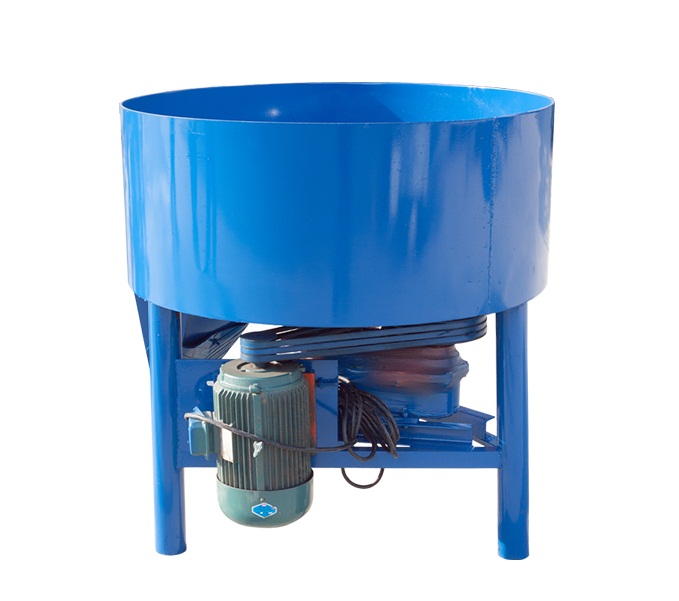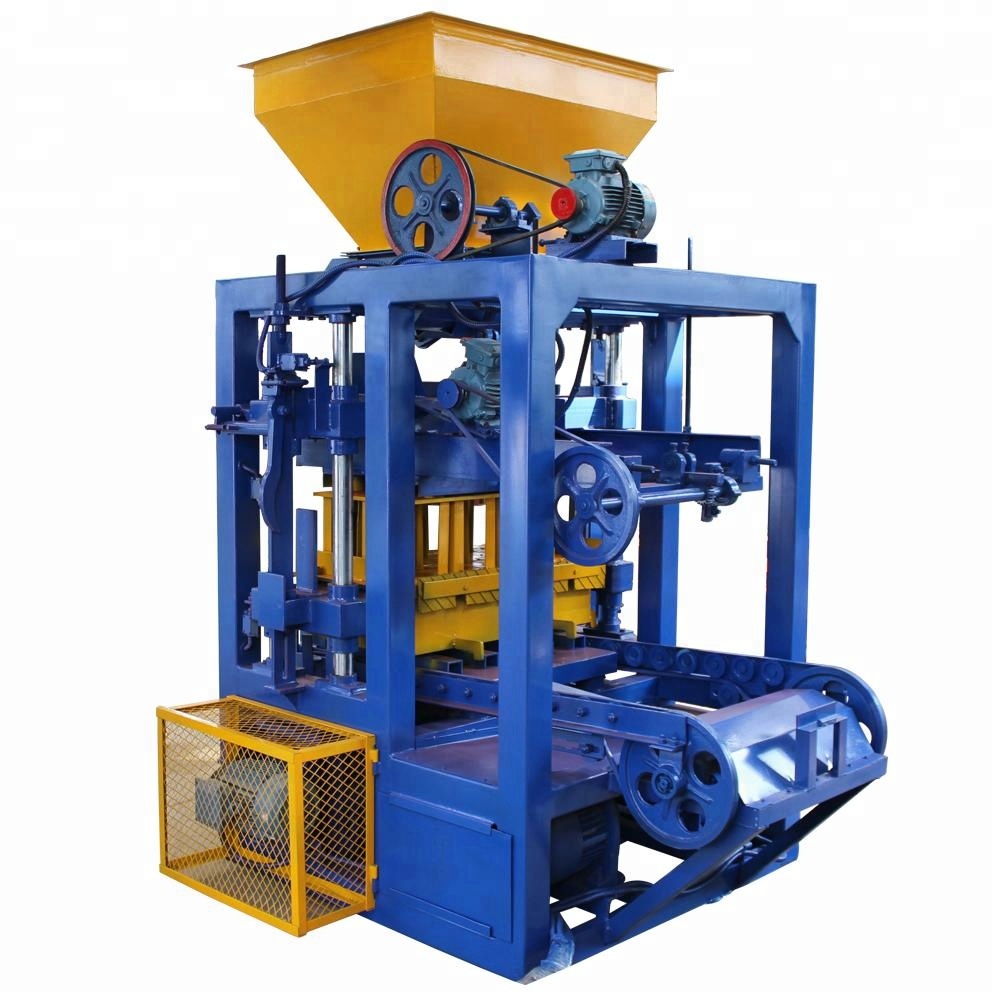Pan Mixer:
1. Usually, the sand and gravel are stored outside in piles and are transferred into storage bins in the plant by a conveyor belt as they are needed. The portland cement is stored outside in large vertical silos to protect it from moisture.
2. As a production run starts, the required amounts of sand, gravel, and cement are transferred by gravity or by mechanical means to a weigh batcher which measures the proper amounts of each material.
3. The dry materials then, flow into a mixer where they are blended together for several minutes. This mixer is commonly used in this kind of prroduction line. It is called a planetary or pan mixer, resembles a shallow pan with a lid. Mixing blades are attached to a vertical rotating shaft inside the mixer.
4. After the dry materials are blended, a small amount of water is added to the mixer. If the plant is located in a climate subject to temperature extremes, the water may first pass through a heater or chiller to regulate its temperature. Admixture chemicals and coloring pigments may also be added at this time. The concrete is then mixed for six to eight minutes.

Brick Making Machine:
Brick Making Machine uses four-column guide with strong vibration motor, and adopts the mode of common compression modulus vibration, which is suitable for various kinds of blocks production. The vibration system contains platform vibration and mould vibration. It operated by electrical and mechanical control together to finish machine different movement, and make sure the machine function right and reduce the operation fault. Final products made by this machine have good looking, clear edges and corners, weight error is ±3%, impact strength is as high as 10.5MP and the error is 10%.
1. Once the load of concrete(raw material) is thoroughly mixed, it is dumped into an inclined bucket conveyor and transported to an elevated hopper. The mixing cycle begins again for the next load.
2. In the block machine, the concrete is forced downward into molds. The molds consist of an outer mold box containing several mold liners. The liners determine the outer shape of the block and the inner shape of the block cavities. As many as 15 blocks may be molded at one time. Different moulds have different numbers of block.
3. When the molds are full, the concrete is compacted by the weight of the upper mold head coming down on the mold cavities. This compaction may be supplemented by air or hydraulic pressure cylinders acting on the mold head. Most block machines also use a short burst of mechanical vibration to further aid compaction.
4. The compacted blocks are pushed down and out of the molds onto a flat steel pallet. The pallet and blocks are pushed out of the machine and onto a chain conveyor. In some operations the blocks then pass under a rotating brush which removes loose material from the top of the blocks.
